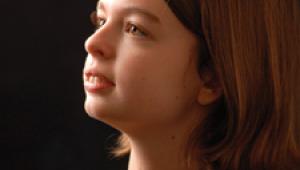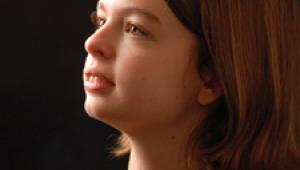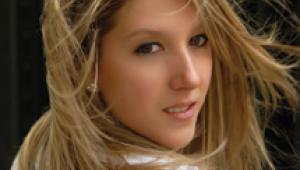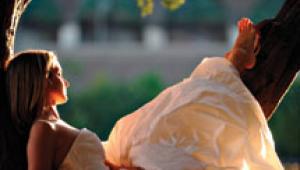Traditional Portraiture And Beyond
Technological Advances Create New Uses For 35mm
It doesn't matter if your interest lies in women, men, or children, I'm going to tell you right now that not having a "big" camera is no longer an excuse for not getting professional results. I'm going to tell you why and how you can achieve professional results in no time at all. Why Now? Great strides have been made in the past few years in many areas that all contribute to better image quality than ever before. Films have taken a quantum leap in quality. Computerized lens design and construction produces better optics at better prices. Are there any "bad" lenses out there? I don't think so. Metering systems are dead accurate 99.9 percent of the time. The mechanics are so automatic that all you have to do is take care of the lighting, pose, and expression. Of course, that's where the skill comes in! There's always a catch, right? I'm going to help you there, too, in just a bit. While many of the earlier mentioned technical points have been valid for at least a couple of years, there's another big reason 35mm now makes so much sense--it's called digital. |
|||
Digital. Before you say what gives, I thought we were talking about 35mm film, relax. We are. One of the problems associated with using small negatives for portraits has always been retouching. In the old days, the rule of thumb was that the head size had to be at least the size of a dime or it was too small to retouch. Stick a dime on a 35mm neg and you'll see just how limited your options used to be. But with digital, all you need to do is scan the neg or print, whip that baby into your favorite image-editing program, and retouch it. Better yet, let your lab do it and go out and shoot some more. Be aware that digital retouching may cost you about $10 or $12 vs. $4 or $5 for negative retouching, but look what you just saved on not buying a medium format system. One less excuse for not being a great photographer. Now that that's out of the way, here's a little help in the lighting, posing, and expression categories. Lighting. Here's a quick rule that will have you getting great results in no time: keep it simple and keep it flat. Flat lighting is flattering. People like it, and it keeps retouching to a minimum, especially those pesky eye bags. (None of the sample photos are retouched.) But--there's always a but--flat lighting does not mean taking your subject's photo on an overcast day. Stick someone out in the middle of a field on an overcast day and you'll get raccoon eyes because the light direction is primarily overhead. Not good. I'd rather go out in the blazing sun and backlight my subject. His or her face will be in shade, resulting in flat light. Go try it. Use a good lens shade and even block that if needed. I'll bet you'll like the results. There are many other flat light situations but they take more experience to see. Use the edge of tree lines, shade from buildings, or window light and just face your subject right into it. |
|||
Posing. Another fast clue: don't get too hung up on posing. I used to be very picky about having things "right" but now I'm more concerned about letting my subject be natural and not contrived. So many times I'll just say to my subject, "Do something good for me." Many people will, some won't, and some I'll refine a little bit. You'd be amazed how well some people do all by themselves. As a starting point, don't have the head facing the same direction as the shoulders unless it's for dramatic effect and don't crop the photo at joints. People look funny with no hands or legs being amputated at the knees. If it looks good, shoot it. Expression. Here's one that is very personal. I know lots of photographers, and we're all different when it comes to eliciting just the right expression, but it's critically important. You can have the best pose and lighting in the world, but if the expression isn't there, it's junk. Karsh is a master of light but it's the glowering expression of Winston Churchill that makes that portrait so brilliant. So here's my quick advice. Be sincere, don't be corny, rude, or sexist, and let your subject know what's going on. If it's going great, tell them. If it's not, say, "Let's try something different," and keep working until you get it. That way they'll have confidence in you and you must exude confidence to relax your subject. Note: All photos taken with a private brand zoom lens, not exactly state of the art equipment. You've got no excuses. |
|||
Film Choice I use the CN film for a nice browntone look that my clients really like. I usually shoot with no tripod and a zoom lens, so the 400 film speed is important. I like the look I get on my outdoor portraits; I don't use it often in the studio. One of my favorite types of photography is window light, and there's nothing like the untethered feeling of freedom you get when shooting the 3200 speed film. I usually rate it at 1600 and use very subtle diffusion with it. It allows me to change camera positions instantly and shoot with reasonable shutter speeds and f/stops so I don't worry about movement problems. Try it--it's like light in a box. |
- Log in or register to post comments





















































